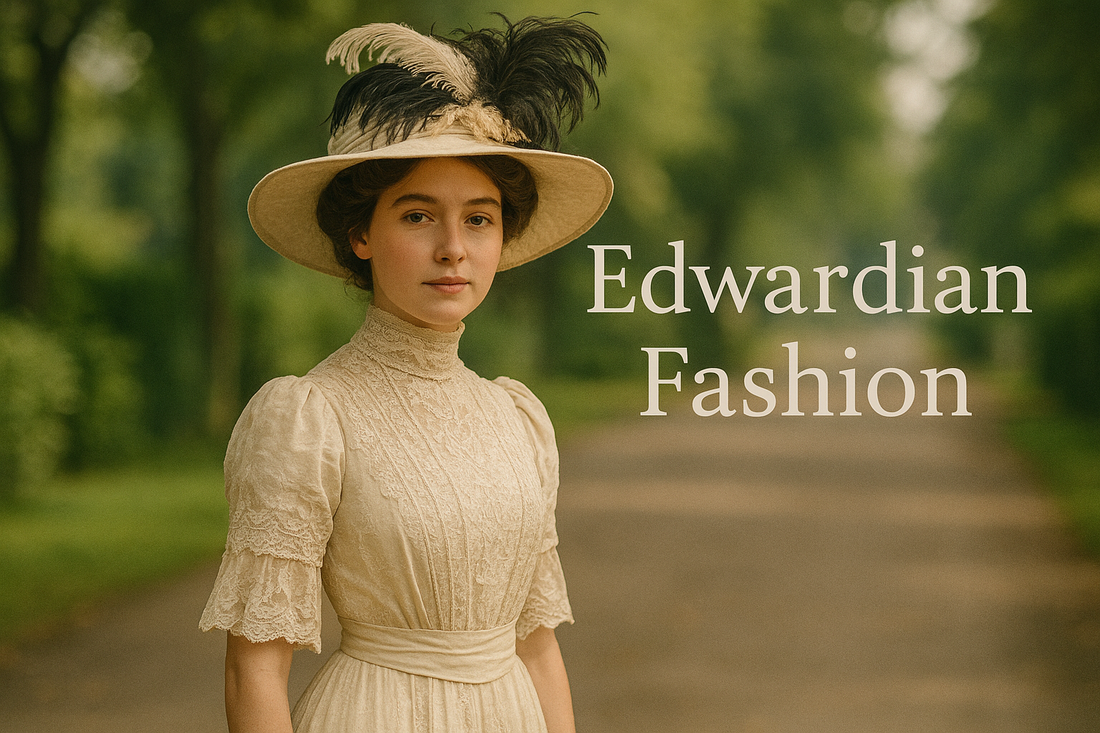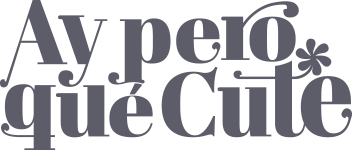
Edwardian Fashion: History, Style, and Lasting Influence
Share
Edwardian fashion refers to the clothing styles popular during the reign of King Edward VII, spanning from 1901 to 1914. Often described as the “Belle Époque” or the “beautiful era,” this period was known for elegance, refinement, and a shift toward more natural and graceful silhouettes compared to the heavier, restrictive clothing of the Victorian age. Edwardian style clothing combined sophistication with a sense of progress, reflecting both cultural and social changes happening at the time.
The Edwardian era fashion played a defining role in shaping modern clothing because it marked the transition between the rigid styles of the 19th century and the more practical, streamlined looks of the 20th century. Designers began to experiment with lighter fabrics, softer shapes, and a balance between tradition and innovation. Whether it was a lavish Edwardian dress worn at an evening ball or a practical outfit tailored for everyday wear, this era left a lasting impact on fashion history that still inspires designers and vintage enthusiasts today.
Read also: The Story Behind Ay Pero Qué Cute: Culture, Confidence, and Spanglish Style
Key Features of Edwardian Women’s Fashion
The beauty of Edwardian women’s fashion lies in its iconic silhouettes and distinctive details. These features created a look that was both graceful and commanding, making the Edwardian lady instantly recognizable. Some of the most defining features included:
-
S-bend corset and the “S-curve silhouette”: This corset style pushed the chest forward and the hips back, creating the fashionable curved posture of the time.
-
High lace collars and puff sleeves: Clothing often emphasized the neck and shoulders, giving a soft but structured shape to dresses and blouses.
-
Long skirts with gored or flared shapes: Skirts were designed to flow smoothly over the hips and widen at the hem, creating movement and elegance.
-
Tea gowns and evening dresses: Luxurious gowns made from silk, lace, and embroidery were central to evening wear, with delicate embellishments adding refinement.
These features defined Edwardian style clothing by balancing structure with femininity. The corset shaped the body, but lighter fabrics and flowing skirts softened the look. Accessories such as wide hats, gloves, and parasols completed the outfit, further emphasizing elegance. This combination of detail, silhouette, and luxury is what makes Edwardian fashion one of the most admired periods in fashion history.
Edwardian Daywear vs Evening Wear
One of the clearest ways to understand Edwardian era fashion is to look at the contrast between clothing worn during the day and the elaborate outfits reserved for evenings. Everyday attire was practical but still stylish, while evening gowns were designed to impress with luxury and detail.
Edwardian day dresses often included shirtwaists paired with long skirts, walking suits with tailored jackets, and blouses with puff sleeves. These outfits were suitable for activities like shopping, visiting friends, or strolling outdoors. They emphasized modesty while allowing more freedom of movement than the heavy gowns of earlier decades. Tailored suits in particular reflected the growing independence of women, offering a polished yet practical look.
In contrast, the Edwardian evening gown was a statement of elegance. These dresses were made of silk, satin, or chiffon and decorated with embroidery, lace, or beadwork. Many gowns featured long trains, delicate draping, and slimmer silhouettes that highlighted the S-curve figure. The tea gown Edwardian women wore at home was looser and more relaxed, designed for entertaining guests in comfort while still looking refined. Together, these distinctions show how Edwardian fashion carefully balanced practicality and opulence, adapting to both daily life and grand social occasions.
Edwardian Men’s Fashion Styles
Edwardian men’s fashion was known for its sharp tailoring and emphasis on formality. Unlike women’s clothing, which highlighted changing silhouettes, men’s style during this time remained steady, projecting refinement and status through accessories and careful details. The key elements included:
-
Tailored suits with waistcoats: Three-piece suits were the standard, featuring a jacket, trousers, and a waistcoat. The cut was slim and structured, reflecting sophistication.
-
Top hats and bowler hats: Hats were essential for any gentleman. Top hats signified formality, while bowler hats were worn for everyday outings.
-
Canes, gloves, and pocket watches: Accessories played an important role, signaling class and attention to detail. A pocket watch with a chain was a symbol of respectability.
-
Edwardian coats and overcoats: Long coats, often made of wool or tweed, completed the outfit. Overcoats were worn in colder months and tailored to match the elegance of the suit beneath.
These items together created a look that was polished and authoritative. The emphasis on tailored lines and accessories reflected the same values of order and refinement that defined Edwardian society.
Fabrics and Colors in Edwardian Era Clothing
The choice of Edwardian fabrics and Edwardian clothing colors helped define the elegance and personality of the era. Fabrics were carefully selected for their texture, weight, and richness. Women’s gowns were often made from silk, satin, lace, and muslin, which allowed for softness and flowing movement. Velvet was popular for winter wear, giving outfits a luxurious depth. Lighter fabrics like cotton and lawn cloth were used for day dresses, especially during warmer months.
Colors played an equally important role in creating the Edwardian look. Ivory and soft pastels, such as pale pinks, light blues, and creams, were popular for daytime wear because they conveyed delicacy and refinement. For evening wear, richer tones like deep burgundy, navy, and black were favored, often paired with metallic embroidery or beadwork to catch the light. Together, fabrics and colors gave Edwardian clothing its unmistakable elegance. By blending light and airy textures with carefully chosen shades, designers created clothing that captured both sophistication and timeless beauty.
Social Class and Edwardian Fashion Trends
Fashion in the Edwardian era reflected social class as much as personal taste. The styles and fabrics someone wore often revealed their economic position.
-
Edwardian fashion upper class: Wealthy families wore custom-made garments produced by leading designers. These outfits used expensive fabrics like silk, lace, and velvet, often decorated with embroidery, beadwork, or delicate lace trim. Extravagant details signaled both status and access to luxury.
-
Edwardian clothing working class: Middle and working-class women and men had simpler wardrobes. Cotton and wool were commonly used, and garments were more practical. While many working-class families could not afford lavish designs, they often followed high-fashion trends in modest ways by using less costly fabrics.
-
Rise of department stores: The growth of department stores and ready-made clothing gave more people access to fashionable styles. Even if the garments were not made of the finest materials, they allowed the wider public to participate in Edwardian trends.
This divide between luxury and practicality shows how fashion was not only a matter of style but also a clear marker of class identity during the Edwardian period.
Edwardian Accessories and Hairstyles
Accessories and hairstyles played a central role in completing the elegant image of Edwardian style. Women’s looks were not defined by dresses alone; the finishing touches were just as important in creating the distinctive appearance of the era. Some of the most recognizable Edwardian accessories and hairstyles included:
-
Wide-brimmed hats with feathers (Merry Widow hats): These oversized hats, often decorated with feathers, flowers, or ribbons, were iconic. They gave height and drama to any outfit, making them an essential piece of Edwardian hats fashion.
-
Lace gloves, parasols, handbags: Gloves were worn as a sign of refinement, parasols protected delicate skin from the sun, and small handbags or purses held necessities. Each accessory balanced practicality with elegance.
-
Hairstyles: Gibson Girl look with soft updos: The Gibson Girl hairstyle, featuring voluminous hair styled into soft, high updos, became a symbol of beauty and confidence. These Edwardian hairstyles framed the face while complementing the high collars and wide hats of the time.
Together, these accessories and hairstyles expressed not just fashion but also status and cultural ideals. They turned an outfit into a complete Edwardian statement, showing the importance of every detail in defining the elegance of the era.
Influence of Edwardian Fashion on Modern Style
The Edwardian fashion influence today can be seen in many aspects of modern clothing. Designers often return to this period for inspiration because of its balance of structure and romance. One of the clearest connections is the revival of puff sleeves, lace blouses, and corset-inspired designs that echo the Edwardian silhouette while fitting contemporary trends. Bridal fashion also reflects this era, with many gowns featuring high lace necklines, flowing skirts, and delicate embroidery that recall Edwardian elegance.
Beyond formalwear, the rise of romantic vintage-inspired movements like cottagecore demonstrates how Edwardian-inspired fashion still resonates with people today. Soft fabrics, long flowing dresses, and timeless accessories draw directly from Edwardian ideals of beauty. The era’s emphasis on detail, femininity, and refinement continues to shape fashion more than a century later, proving its lasting legacy in modern style.
How to Dress in Edwardian Style Today
For anyone interested in recreating the look of the Edwardian era, here are practical ways to incorporate Edwardian style clothing today. These tips show you how to dress Edwardian with authenticity while keeping the style wearable:
-
Choose high-neck blouses with lace
-
Wear long skirts with a slight flare over the hips
-
Select tea gowns or lace dresses for special occasions
-
Accessorize with wide-brimmed hats, gloves, and parasols
-
Mix Edwardian-inspired pieces with modern clothing for a balanced look
These elements make it possible to bring Edwardian charm into a modern wardrobe, whether for historical events, themed occasions, or simply for those who appreciate the timeless beauty of this style.
Conclusion: Why Edwardian Fashion Still Matters
Edwardian era fashion represents an important turning point in style history, standing between the elaborate excess of the Victorian period and the streamlined practicality of the 20th century. With its graceful silhouettes, luxurious fabrics, and refined details, Edwardian clothing captured both elegance and progress.
The influence of Edwardian style clothing can still be seen today in modern bridal gowns, vintage-inspired designs, and romantic trends that echo the timeless beauty of this era. More than just a historical style, Edwardian fashion remains a source of inspiration for designers, collectors, and fashion lovers who continue to admire its lasting sophistication. Its legacy reminds us how fashion reflects culture, social change, and identity, ensuring Edwardian design continues to inspire new generations of creativity.
